
Dickie & Cyndy Go To Switzerland and France
2017 : April 22nd - May 6th

The High Level Itinerary



The High Level Itinerary

INTRODUCTION & TRIP OVERVIEW
 ) invited us to visit him and James in Switzerland. Well, OK; James invited us also.
) invited us to visit him and James in Switzerland. Well, OK; James invited us also.
Before write-ups of our trip and pics, here are a few shots of Quentin.

We figured as long as we were going to Switzerland we might as well take a few days to visit Paris and some of its surrounding areas as well.
As with all of our trips we had a truly great time. The weather wasn't that great for most of the trip - cold and rainy. Did I mention COLD & RAINY? However, I kept in mind the Rolling Stones' song, "You Can't Always Get What You Want".
But that stopped us not one bit from seeing everything we could have hoped to see and enjoying every moment of it.
The people in both countries were most friendly and hospitable. We've all heard tales of people in France not being very friendly toward Americans with our poor ability to speak French. We, NOT ONCE, encountered this type of attitude from anyone.
James took the week off so as to be able to show us around his neck of the woods in Switzerland. This was much appreciated by both of us. We had traveled to Switzerland before; but, it was only a brief excursion into part of the country while on our vacation in Italy back in 2006.
James' Mother, Page, and his brother, Rich and his fiancé Catherine had previously visited James on separate occasions. I was a little concerned that James would be doing the same "touring" which would be boring for him. He assured me that it would be fine as there were some things he had yet to see.
With James as tour guide we saw some truly neat stuff - the city of Bern, the Alps, the countryside, lakes, old churches, an old fort, a medieval village, and other great things including "The Alien Museum" (more on this one a little later).
At the end of all the pictures and write-ups there is a section containing a few VIDEOS we took of various sites we encountered.
Write-Ups and Pictures
James lives in a super area of Bern. The views from his place are filled with postcard-type scenes of the Alps. Here is a picture of Eiger Mountain taken from his abode. To me, this mountain became famous from the movie "The Eiger Sanction".

Here is Cyndy inquiring as to why there were no microwaves used in Switzerland. How in the world does anyone heat old, leftover coffee? OK! To be a little more accurate here, I am the only one who drinks warmed-up, old, leftover coffee!

Here are some random scenes from Bern:












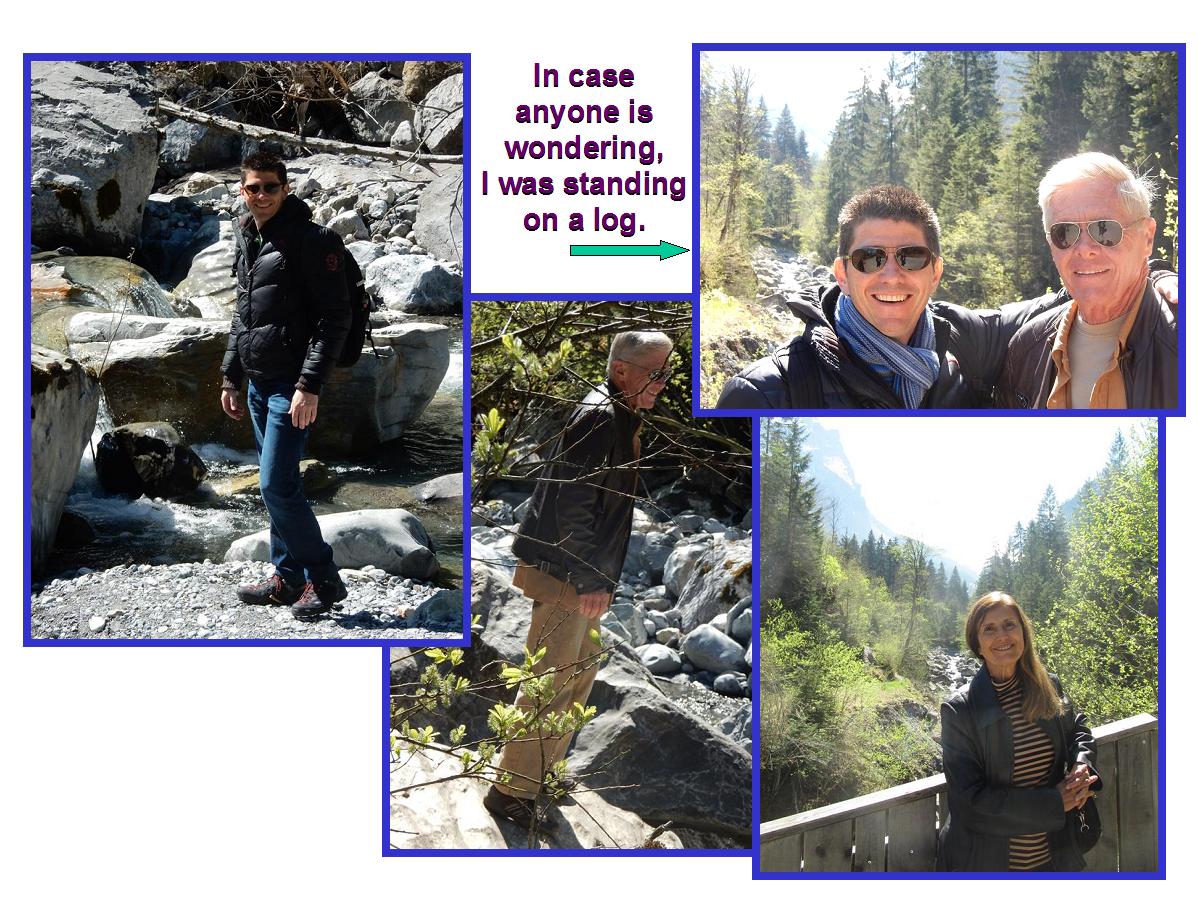

But, it was nearly 70 degrees while we were there. Totally delightful. This was our first experience on this trip with any serious walking uphill at over 5,000 feet elevation.
We, of course, live in Florida where everything is flat - at sea level. The highest point we encounter here is a bridge. My thighs were killing me. Cyndy is in much better aerobic condition than am I, so she did just fine. As I found out there was much more uphill walking to come while in Switzerland. This was a good thing as it got us in shape for places we visited later in France.



Surrounded by the Alps it features a very large central park. It has great restaurants, outstanding views, and, apparently, lots of paragliding. These crazy people take off from high up in the mountains and glide down to the town and land in the park.
(Yes, Cyndy and I wanted to do it; but, it was getting late when we got there. Next time?)
In the video section (at the end of this) are some videos of people doing this.







Here we found a truly magnificent medieval town complete with the "Alien" Bar.
OK! I'll get the "Alien" Bar & Museum out of the way first.
Obviously, it seems kind of peculiar to have an "Alien" place in the middle of the Alps. I still don't know why it's there. But, . . .
Yes, the theme of the bar and museum is from the movie "Alien". Well, as James explained to us, actually the movie concept was created from the art in the museum. The artist, H. R. Giger, fashioned some pretty weird visions into art. (an example)
Giger actually was a consultant on the movie; his work won an award.

The director of the movie "Alien", Ridley Scott, got the inspiration for the movie's creature(s) from H. R. Giger's book "Necronomicon".

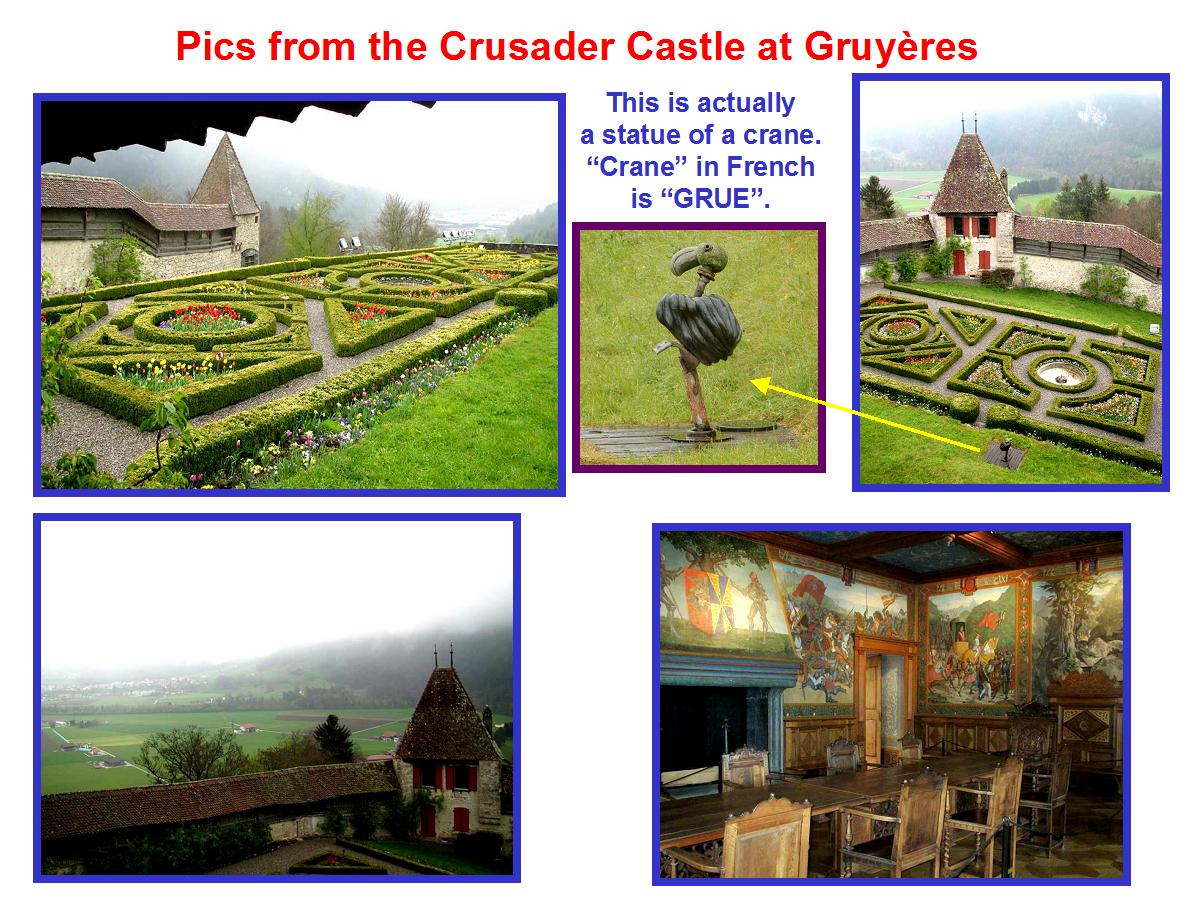



Most interesting to me was that on the 2 trains we took during our visit there were no security checks at all. No metal detectors, no baggage checks - nada! I found this more than just curious.
Along the train's route we stopped briefly at a couple of French towns with familiar names.

The Gare du Nord station, one of the world's largest train stations, has several "halls". In the entire station there is only one bathroom.
And, you can bet it's not in the hall to which you arrive. But wait! There's more. It's a pay toilet. When you arrive with only a wad
of ![]() 50 notes in your pocket AND there's no place to make change, you could be in trouble.
50 notes in your pocket AND there's no place to make change, you could be in trouble.
As anyone who is familiar with our travels knows we are always up for "an adventure". So, when we arrived in Paris we decided to rent a car for our traverse to Versailles - our first real stop in France. How bad could Paris traffic really be, I asked myself.
After leaving the train station in our sporty little number, it was a good 1/2 hour before I was able to go fast enough to get it out of 1st gear. The traffic was HORRIBLE (and I'm being kind here). Everybody honking their horns, motorcycles weaving in and out of lanes and riding between lanes, cars seeming to want to shift lanes for apparent reason; OH, it was a blast.
Anyway, once outside the city proper the traffic smoothed out and all was fine after that.
We arrived at our hotel in Versailles with no problem.
I guess if one just has to have a house, Versailles would not be a bad choice.

Although obviously opulent, I found it less impressive than Catherine's Palace in St. Petersburg, Russia.










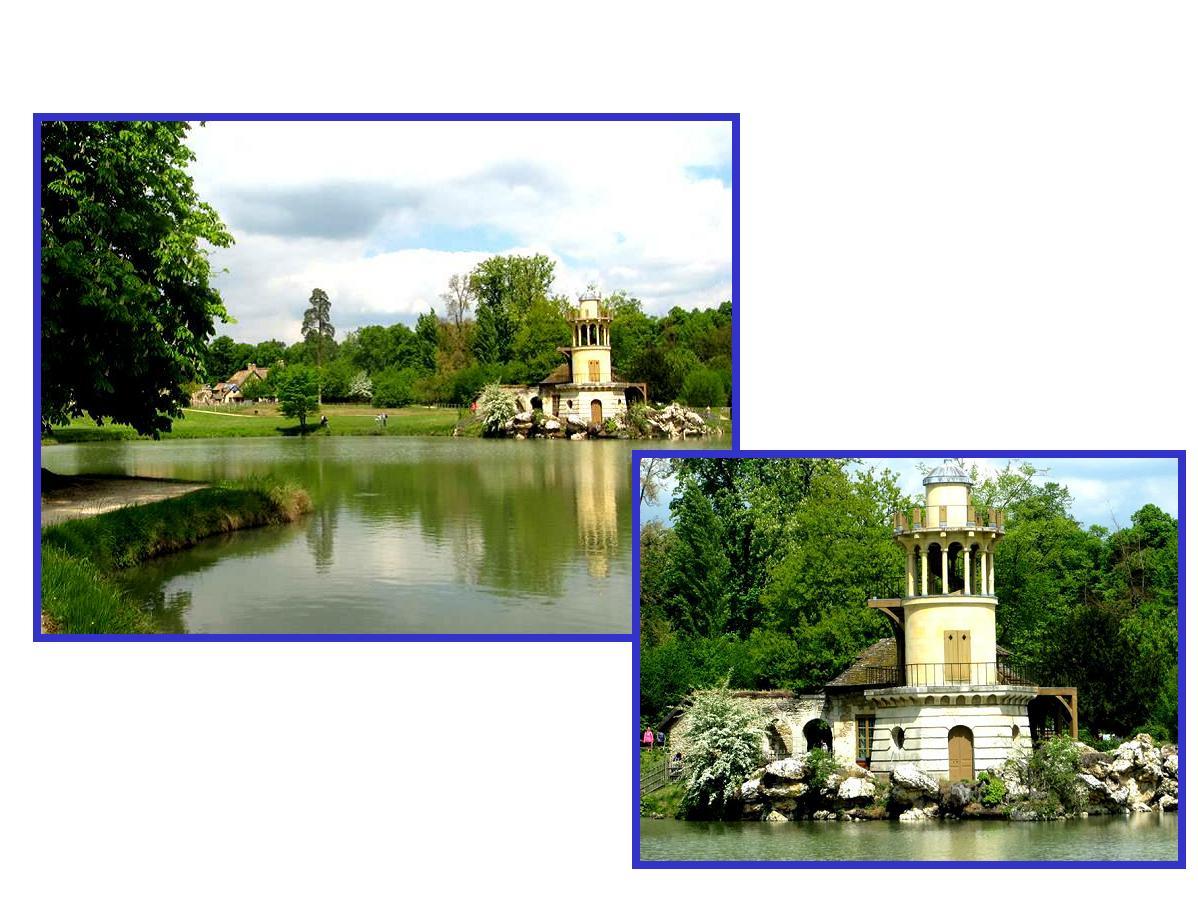

On the way it was pouring cats & dogs - and very chilly. So, as we are wont to do, we emplored "Apollo" to cause the rain to cease prior to our arrival at Mont Saint-Michel.
As we pulled into the parking lot the rain stopped, the
clouds parted, and the Sun came out. Coincidence? Of course. However, we have done
the same thing on numerous occasions since then and it's worked every time. We are careful not to
abuse the privilege. Hey! "If it works, don't mess with it!", I always say.
OK, some background on this might be in order. When we visited Greece we
took a side trip high up in the mountains on a treacherous road to visit a temple to Apollo - the Temple of Apollo Epicurius.
It was under construction and nobody but us was there. It was raining severely. So, as a joke
I made the following statement: "Hey, Apollo, we drove all the way up this mountain in pouring
down rain just to see you. The least you could do is make the rain stop."

As you can see from the picture above, Mont Saint-Michel is an island very close (a few hundred yards) off the mainland. I became fascinated with it in high school when we were studying the 100 Years War. It's walls were never breached and, even today, is celebrated in France for this reason.
As expected, the place was very crowded with tourists. Of a curiosity was the fact that only about 50 people actually live on the island.
The thing that truly fascinated me, however, was the height of the tidal flow of water. At low tide there is virtually no water surrounding the island. In quick order, the tide rises more than 12 meters - (that's over 39 feet). Warnings are posted not to attempt to cross the sand from the mainland to the island. When the tide comes in, it comes in very, very fast. More than a few have drowned in the attempt.
I couldn't wait to see this tidal surge.
We arrived there just after low tide - as you can see. So, I asked the hotel manager when was a good time to see the tide rise.
He responded with, "There are no more large tides." I almost had an apoplectic fit.
"What do you mean there are NFT?" (What I actually said was - "What do you mean there are no tides?") He responded with something along the lines of "The moon and the sand have shifted." SAY WHAT?!!! But, sure enough the tide coming in never got above about 1 to 2 feet in height. I WAS BUMMED!
What is curious is that if you look up the tide schedules for Mont Saint-Michel, even today, it still shows massive tidal height.

We did a little research on the tides at Mont Saint-Michel. It turns out that the reason that the tides do not rise and fall as before is that "Man" tried to alter the environment there. Too long a story to detail here. But, as usual, it's case of "stupid humans" messing with Nature.
This does not, however, explain the current, published, and incorrect tide schedules.
More preamble to Mont Saint-Michel -
The guidebooks talk about how steep the climbs are inside the structure. Truly, if one has any ambulatory issues at all, this is NOT a place for you.
Now, as we don't have any such issues AND we had our training enhanced while in Switzerland, it was a piece of cake.
The entire place is a joy to visit. We were fortunate enough to get a hotel on the island. The views were magnificent. Walking up ancient cobblestone streets all the way to the top was awesome. Cafe's line the street (there is only one) and one is never without good pastries, coffee, etc., to munch on along the way.


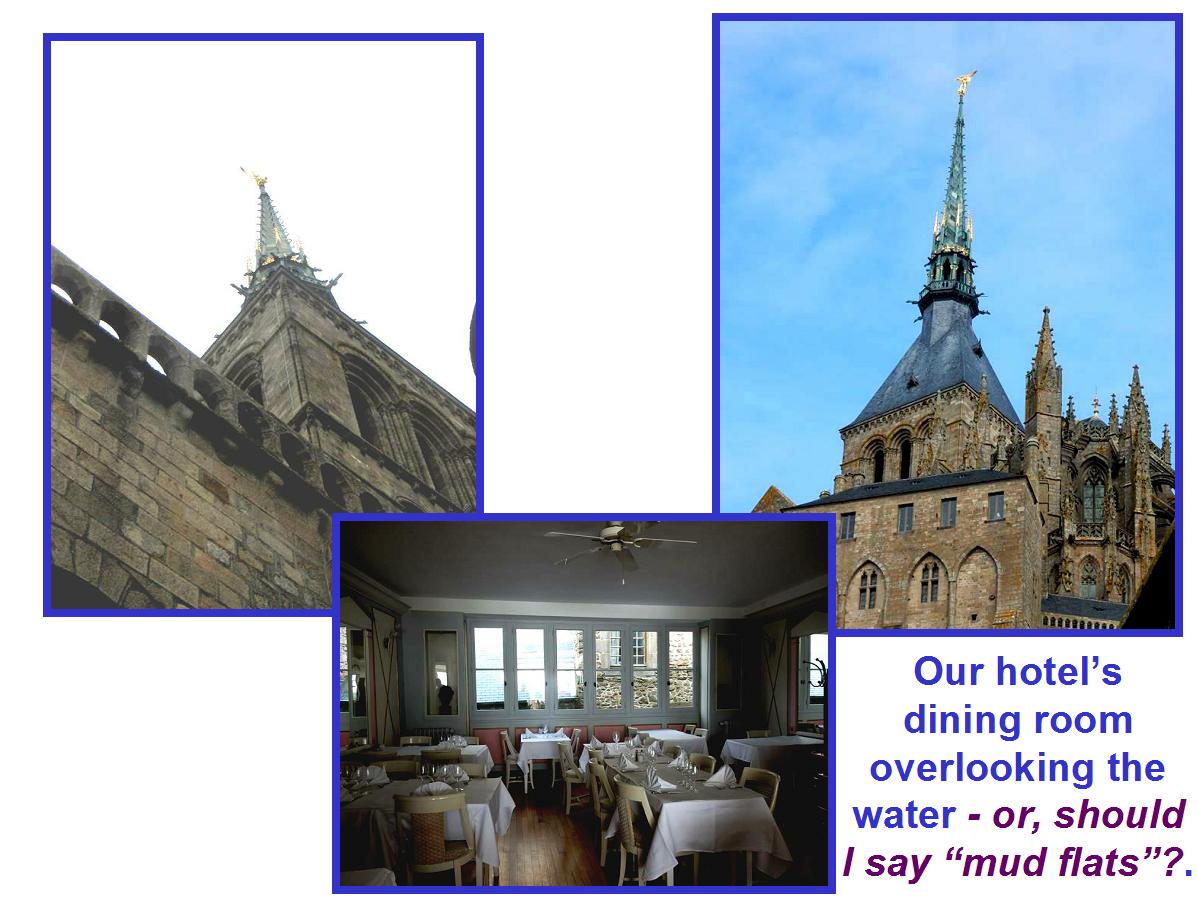





As I'd had all the driving adventures in Paris I needed, we decided to take the train back to Paris and take a taxi to our hotel. But, to do that we needed to drive over to Rennes to catch the train.
It was about an hour's drive and along the way we got to experience the French countryside as one would envisions it via postcards. Truly delightful drive.

Wherever we traveled in both Switzerland and in France we kept seeing these yellow-flowered fields. It turns out that these flowers are actually called "rapeseed". (Kind of an unattractive name in my opinion!) Actually, in this context, the word "rape" derives from the Latin word for "turnip".
Anyway, from this plant is produced an oil that is very similar to Canola oil. The difference between rapeseed oil and Canola Oil is that Canola has 2 ingredients less than rapeseed oil - the 2 ingredients were found by some to be not heathful. ("Canola" is a mixing of two words, "Canadian" and "Oil".)

Taking the train in France is a breeze. When we got to Paris we took a taxi to our hotel. The taxi driver was experienced in Paris traffic; so, we arrived at our hotel posthaste.
We now are truly in Paris.


From our hotel we walked almost everywhere. The two exceptions were to the Notre Dame Cathedral and to Montmartre. To these we took the metro - a little too chilly and rainy to walk.
Before continuing, a little of our perceptions of Paris - in general:
Both Cyndy and I had been to Paris many years ago. So, in our "touring" we saw things that each of us had seen before, things that only one of us had seen, and some things neither of us had previously seen.
What was immediately apparent was the change in demographics over time. Clearly 25% to 30% of the people we saw on the Champs-Élysées were either African or Arabic muslims. The locals with whom we spoke were disheartened by this and indicated that their beloved home had been much changed by the migrants and not in a good way.
Begging on the street was rather commonplace; often, you would see whole families (father, mother, and 2 or 3 kids) wrapped in blankets with a cup for donations in front of them. Here's but one example of a migrant "seeking alms" -

With Paris' recent history of terrorist attacks, security, as one might imagine, is at a state of high alert. There are not large groups of police or military patrolling. They are there, but they are not easily seen except at major tourist centers. We actually saw more military strolling about in Montmartre (i.e., 4) than anywhere else. They seemed to be hovering around a street musician (playing the clarinet) - I think they liked his music.
We were in line to enter Sainte-Chapelle and there were 2 heavily armed police there for safety. I went up to one and asked if he spoke English. He said that he did. I then told him that we appreciated what he was doing and he had our full support should he need it.
He reacted as if I had just handed him a stack of ![]() 500 notes. His smile was clear for all to see.
500 notes. His smile was clear for all to see.
The Champs-Élysées, being the busiest street in the world, is crowded most of the time - really crowded. We saw no signs of pushing or shoving or anyone thinking they had the "right-of-way" kind of thing; lots of "Excusez-moi!" statements though.
It felt crowded but comfortable walking about the city - even on the very narrow side streets, on which we roamed at will.
I would strongly recommend buying a museum pass. The cost is about equal to 4 museum visits. But, the cost is not the real reason to purchase the pass. It allows you to bypass many of the long lines for entry. Well worth the money.
One more thing, legally pedestrians have the right-of-way at intersections. But unless you are larger than most European cars, I would seriously recommend you obey these signs.

Pics From Paris



First up is the d'Orsay Museum. Less famous than the Louvre, of course, but I found it much more enjoyable and easier to navigate.
The D’Orsay was originally a train station, then a mailing station for sending packages to prisoners of war during WWII, then a film set, then almost razed. A group of concerned citizens protested successfully to save the building. The old train station was replaced with a modern hotel which closed and later re-opened as Musee D’Orsay.
















Now, we head over to see our first close-up look at the Eiffel Tower.
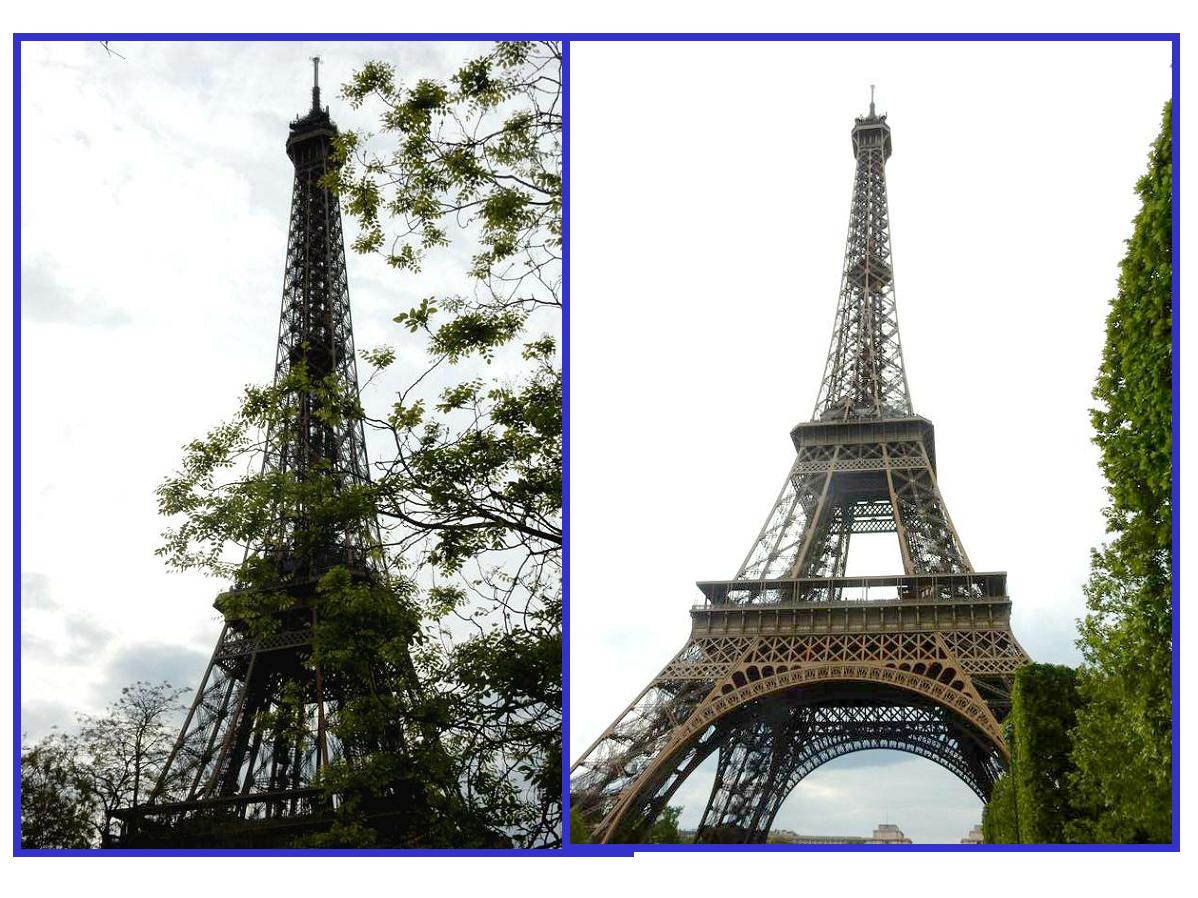

James, having lived in Paris, recommended several places to have a quite dinner and a drink or two. As one of them was almost directly across the street from our hotel, we decided to give it a try.
The food was delicious and their flan looked even better. Being pretty full I ordered some flan to go. Do they give you a regular, plain ole "doggie bag"? Noooooo! Remember, this is Paris after all.

No visit to Paris is complete without a visit to the Louvre.
So, we decided to walk on over to the Louvre - not a short walk, by the way. Could we have taken a taxi? Of course. And, taxis in Paris are cheaper than here in Cocoa Beach. But, NOOOOO! We walked.
Along the way we passed through the Tuileries Garden. There wasn't anything spectacular to see - just small trees all in a line.
Of course we picked the coldest, most windy, and wettest day of our trip to do so. I forgot the old saying "Timing is everything! To make matters worse, EVERYBODY in the entire world decided to visit the Louvre at the same time.
The lines to get in, even with museum passes, were very long. We waited over an hour - standing outside, in the cold, and in the rain - just to get in. BUT, it's the LOUVRE!!!
Once inside, of course as expected, the place is marvelous. It has all the art one could ever hope to see.
Museum buildings are often as interesting as their contents. The Louvre was a fortress, then a palace (abandoned for a time), then a museum. Some of the stairs on the exterior entrances show worn places from horses hooves.
Logistically, however, the Louvre is a "spaghetti bowl" of confusion. The guide maps of the museum they provide are pretty much useless in the specific. What I mean by this is that, for example, a specific piece of art (or, artist) has a room number identified in which it may be found. Some of the rooms are numbered and many are not. The rooms seems to be numbered in a non-sequential manner. So, finding what one is looking for is an adventure unto its own. And, we love an adventure; so, hunting and asking guards was the order of the day.
There was a lot of "Pardon, où est le ___?" going on.
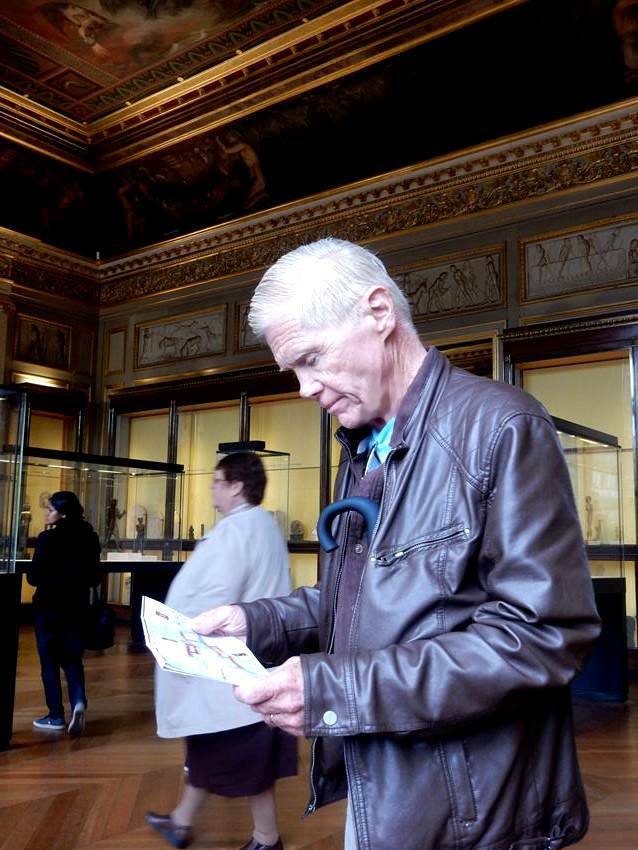
Me looking and not finding






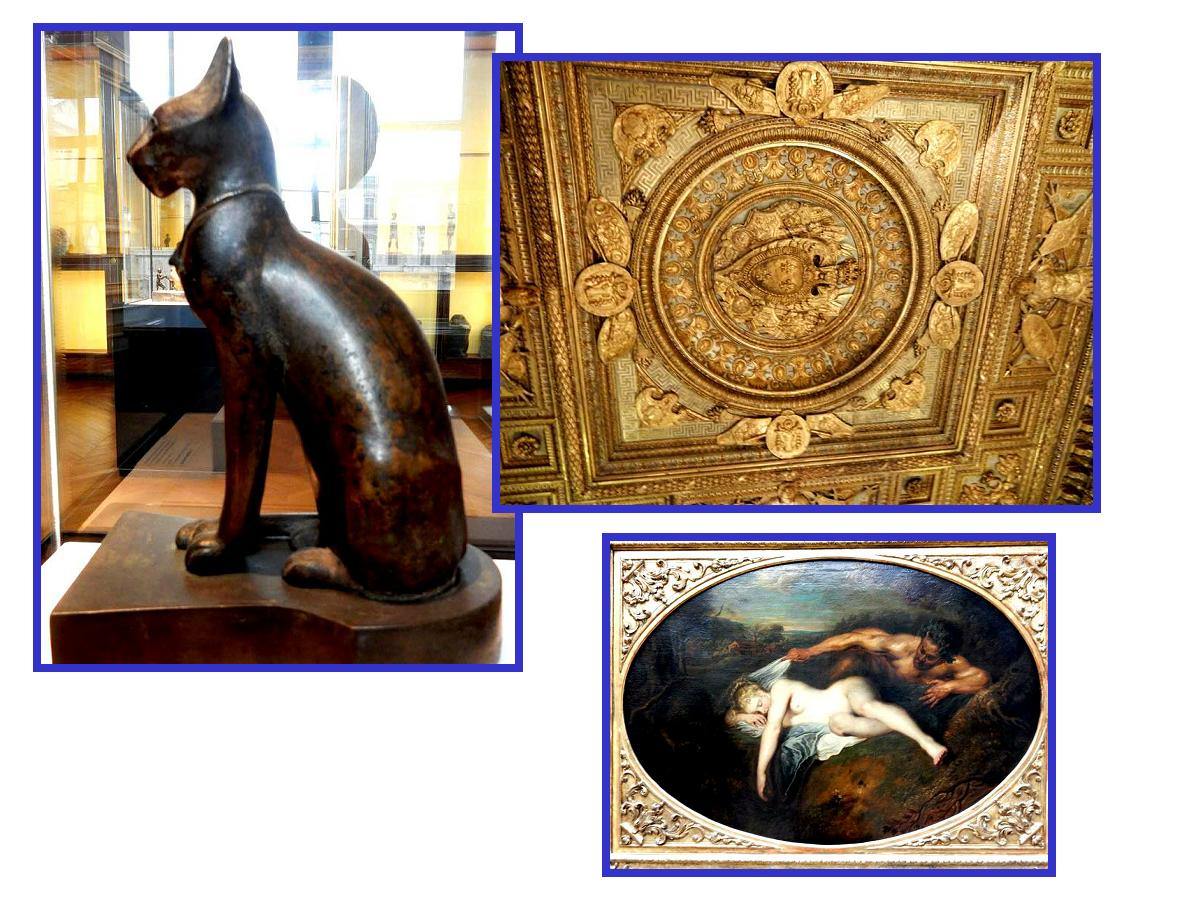





It is generally closed to the public, as it was when we went.
The winery is very small now (the entire hill at one time was a winery) - it looked to be only about 75 yards square and produces only about 1,700 bottles a year. So, of course, I had to have a bottle to take home.
Mont Montmartre is a rather steep hill located in the northern part of Paris. Atop this hill sits the Sacré-Coeur - the highest point in Paris. The winery is located not far from the church.
The weather forecast looked none too promising; so, we took the metro rather than walking. (There are no security checks on the metros either. Somewhat surprising to me, anyway.)
The town-part of Montmartre is a delight. To me it conjured up emotional images of Paris as one might imagine from seeing Maurice Chevalier, Lois Jordan, and Leslie Caron in the movie "Gigi". Loved this place!!!
To start, a little about Sacré-Coeur -
Sacré-Coeur is built on the ruins of earlier structures. It was first a place of worship for the Druids. Later, the Romans built a temple there to honor the gods Mars & Mercury. Much later, after Catholicism had taken over France, the government built Sacré-Coeur as an atonement for the past sins of the French - whatever they were.
Almost immediately after the metro stop is the entrance to Sacré-Coeur. To get to the church there are hundreds of steps to be climbed. We chose the Funicular instead this time. We would do the "step thing" a little later.






As mentioned, the town of Montmartre is a delight. Plenty of cafe's, street artists, street musicians (some good, some not so much), ice cream shops, and many other places to gladly take your euros, and, of course, the winery - And, the main Information Center.
It turns out that the Information Center is the only place one can buy wine from Le Clos Montmartre. The great thing is that all sales of the wine go to charity.
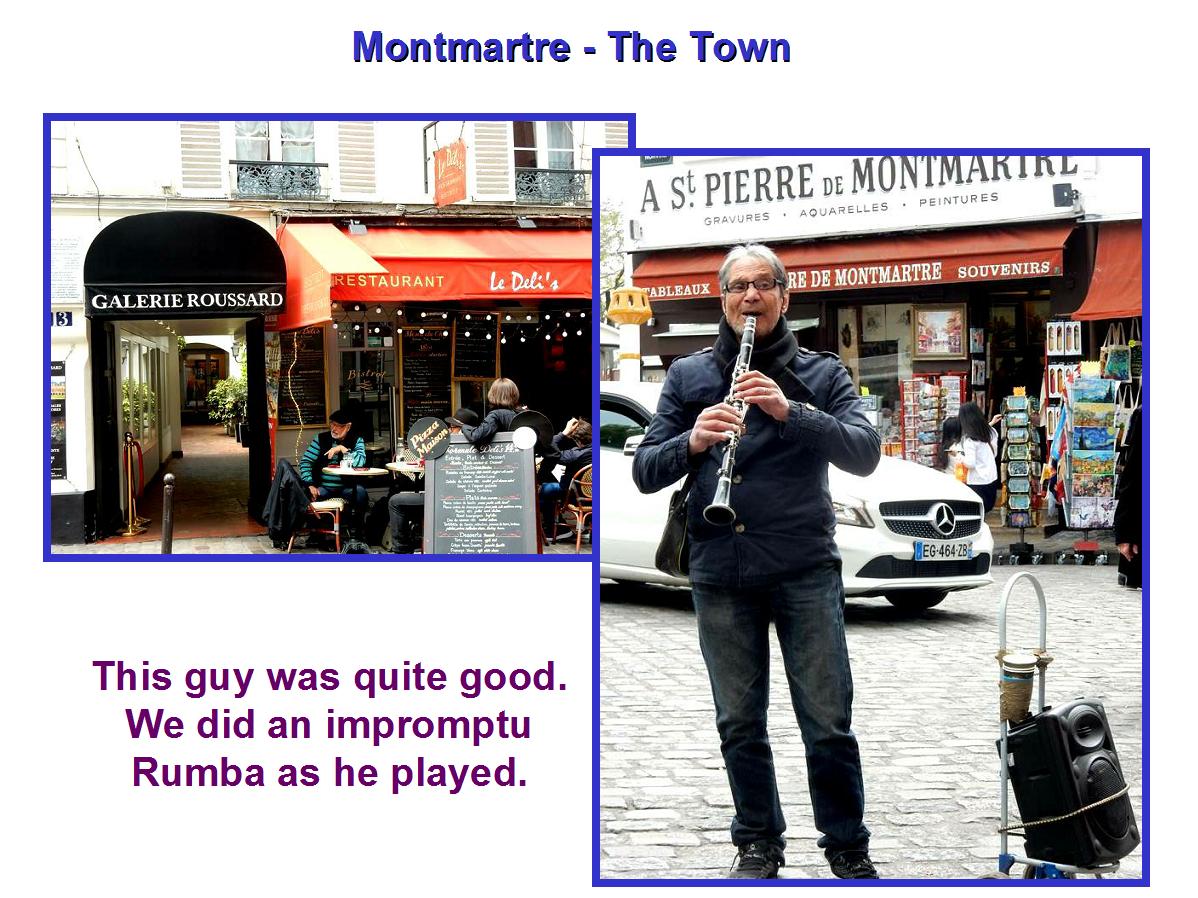








After walking down over 400+ steps, yes, it was at the bottom of the hill, the directions we had were not the best. So, wandering a bunch was our future for a bit. We eventually found it.


Paris was originally founded by Celts - way back, many moons ago.
After we got back up the hill and after a little more hanging around the town we climbed back down the hill to catch the metro back to our hotel.
One more major thing to see:
Notre-Dame de Paris
All the pictures of Notre Dame I had seen showed massive "flying buttresses". We arrived at the front of the cathedral and no buttresses What could be wrong here?
Well, as it so happens the flying buttresses are on the back of the place - not the front.
The cathedral is truly magnificent.











Finding both of these require some wandering through "The Left Bank" area of Paris. Lots of cafe's, etc. A fun bit of walking it was.
The Pantheon was originally built as a church dedicated to St. Genevieve. It was modeled after the building in Rome of the same name.
It serves as a burial place for such people as Voltaire, Rousseau, Victor Hugo, Émile Zola, and Marie Curie.
The information we had indicated that the place was open for visitors. Which, OF COURSE, it WASN'T.
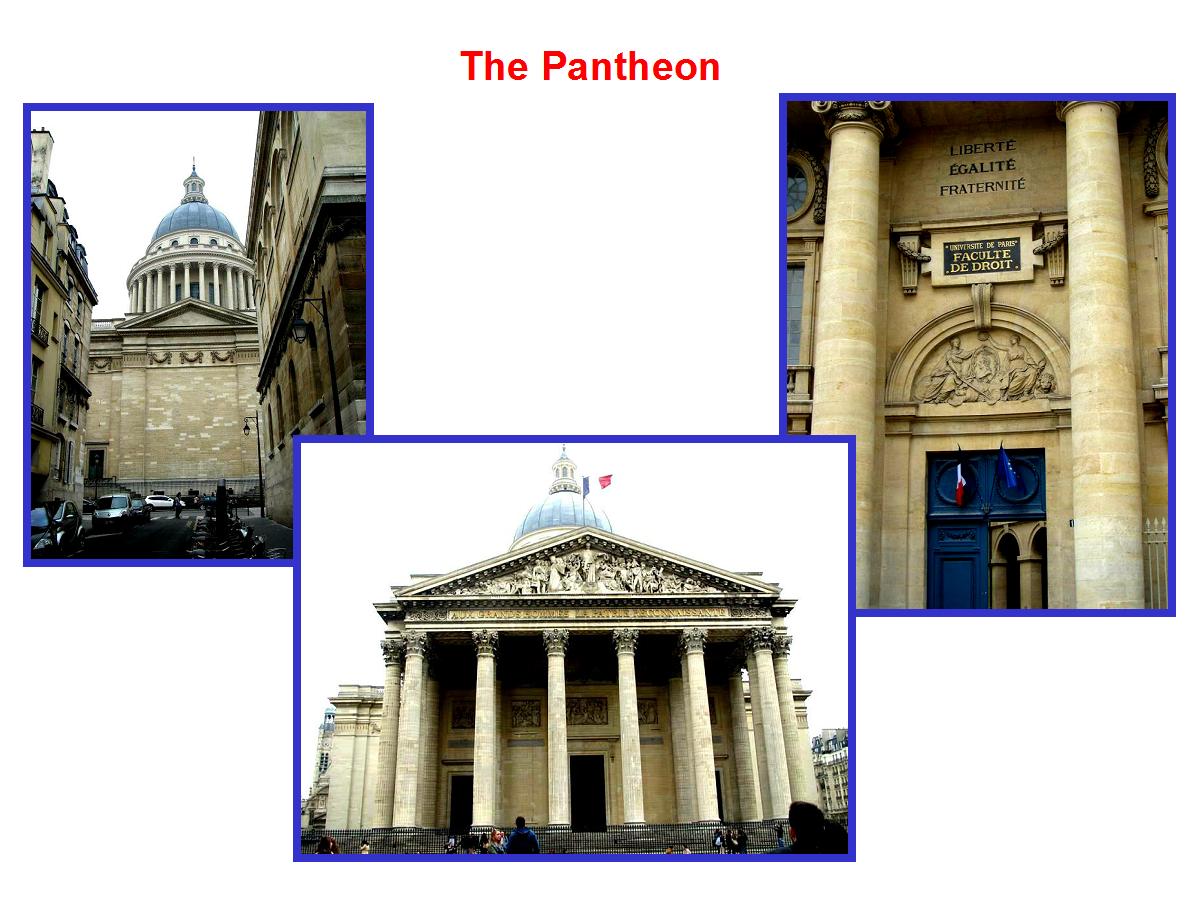
Sainte-Chapelle is reputed to have the most medieval stained glass - well, of almost anywhere. And, yes, the English word "chapel" comes from the French "chapelle" - but, that's a long story involving St. Martin of Tours (the patron saint of France), a cape, and a beggar.
Anyway, we entered the structure into, well, a chapel. Quelle surprise! It is a beautiful little church with some stained glass - as all these churches have. But, this was not as we had understood it to be.





This was our last day in Paris. So, we decided to take an almost obligatory "boat ride on the Seine". It offered a "recap" of almost everything we had seen in the city in about an hour.


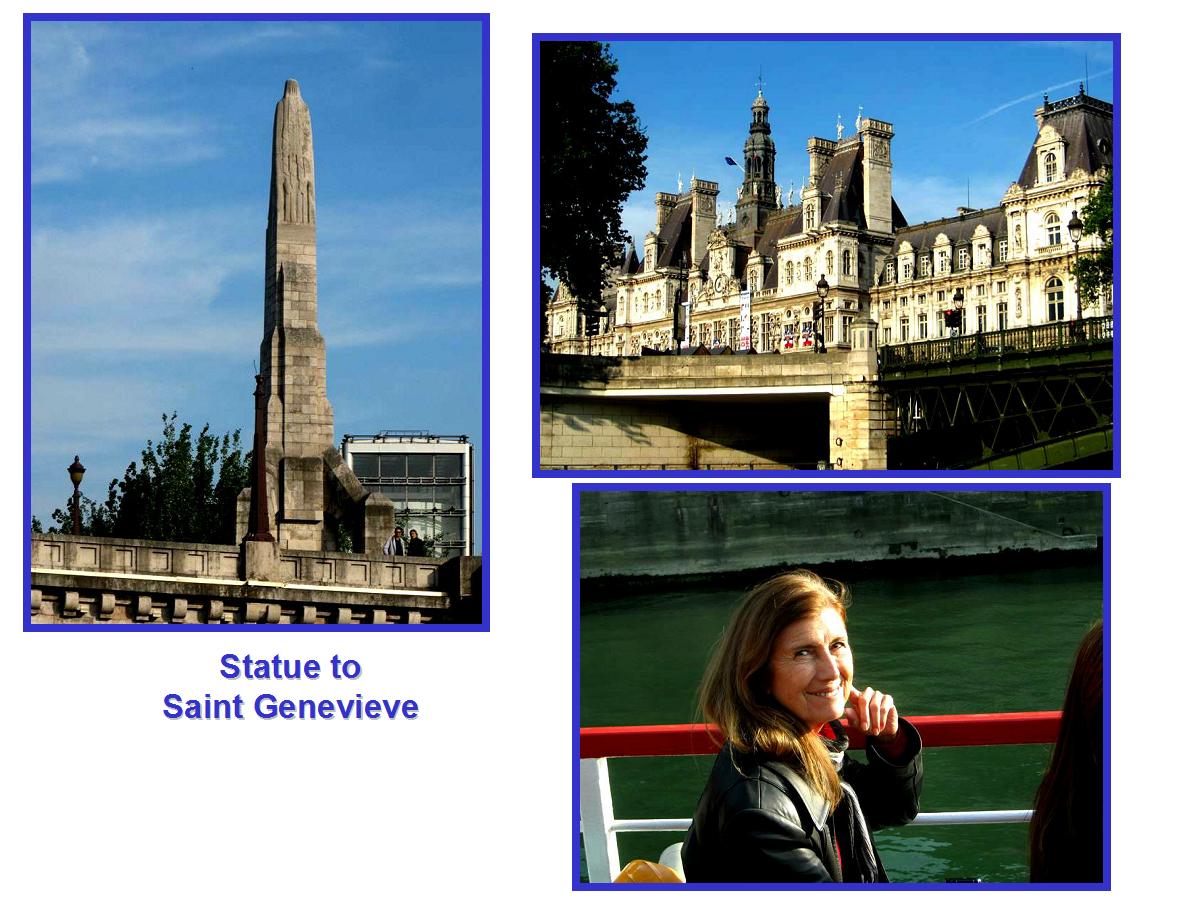


Now, we're ready to leave France. Our flight left from the Charles de Gaulle Airport.
Doesn't every airport's passenger waiting area feature a Picasso exhibit and shops like Gucci, Guerlain, and Dior to explore while waiting for one's flight?
Well, this one did. Amazing!
The gracious hospitality of everyone with whom we had contact was superior, the sights were beautiful, and the food excellent.
For what else could one wish?
Our view of the Alps while in Mürren
An F-18 on landing approach - viewed while at the fort in Sion
Paragliding scenes while in Interlaken
Along the gardens of Versailles while classical French music played
A View of the Eiffel Tower from the bottom up
Clarinet street performer in Mont Montmartre